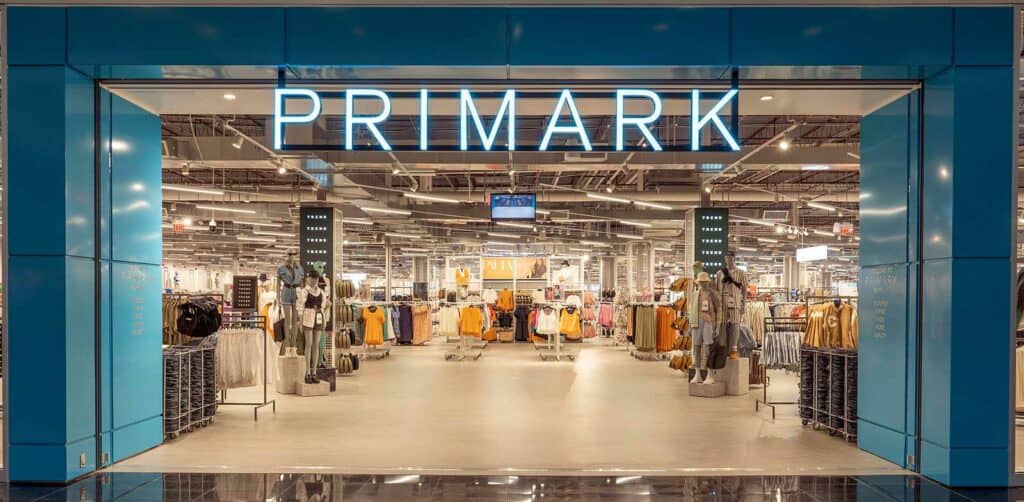European Retailer Primark is Thriving With Only Brick-and-Mortar (not online) Stores

This post summarizes a video (embedded below and linked here) from the Wall Street Journal ‘s “The Economics of” series. This post summarizes the video and then suggests how it could be used in your marketing class.
The video describes the business model of European fast fashion retailer Primark, and explains how it has thrived by primarily focusing on physical store sales rather than online shopping. The video works well when you cover retailing (Chapter 12), especially in countering the narrative that online is the only route to success. The video can pull in ideas from other chapters, too. Here’s a breakdown of the key points discussed in the video:
- Primark’s Uniqueness: (Chapter 12) Unlike other retailers, Primark has mainly relied on in-store sales, even as e-commerce has grown rapidly in recent years.
- E-commerce Challenges: (Chapters 10, 11 and 12) The video emphasizes the expenses and challenges of online shopping for retailers, especially regarding returns. Processing a return for merchandise bought online can be costly.
- Pandemic Impact: (Chapter 3) The COVID-19 pandemic had a significant effect on Primark, as they couldn’t rely on e-commerce to maintain sales when physical stores had to close.
- Click and Collect: (Chapters 10 and 12) To adapt, in 2022, Primark introduced a “Click and Collect” service in select UK stores, allowing customers to order online and pick up in-store. This approach benefits Primark by saving on shipping and encouraging customers to shop more once they’re inside the store.
- Product Range: (Chapter 12) Primark offers a wide range of products, from clothing to beauty, home, and travel products, making it a one-stop-shop for many consumers.
- Volume & Pricing Strategy: (Chapter 12) The company is one of the largest retailers by volume in Europe and the UK. It can offer low prices because of its high volume, strategic sourcing from Asia, and avoidance of e-commerce expenses.
- US Expansion: (Chapter 10) While Primark has been a major success in Europe, its initial expansion to the US faced challenges.
Differences in retail culture, store size, and location preferences meant that Primark had to adapt its approach for the American market. In summary, the video sheds light on Primark’s unconventional yet successful approach in the retail world, focusing on in-store sales while minimizing the challenges and costs associated with online shopping.
How to use this video in your marketing class
With a few ideas from ChatGPT and my own mind, here are some thoughts on bringing this video (or its content) to your marketing class:
- Brick-and-Mortar vs. E-commerce: (Chapter 12) Compare and contrast the pros and cons of relying on physical stores versus e-commerce. Discuss the current trend of e-commerce growth and Primark’s decision to rely primarily on in-store sales.
- Case Study on Business Models: (Chapters 2 and 12) Use Primark as a case study to showcase an alternative business model in the retail sector. Have students analyze the strengths, weaknesses, opportunities, and threats (SWOT analysis) of Primark’s approach.
- The Impact of External Factors: (Chapters 3 and 12) Discuss the vulnerability of businesses, like Primark, that rely heavily on one sales channel when unforeseen events occur, like the COVID-19 pandemic.
- Adaptation Strategies: (Chapters 10, 11, and 12) Dive into Primark’s “Click and Collect” service. Discuss why this strategy might be effective and how it bridges the gap between in-store shopping and e-commerce.
- Pricing Strategy: (Chapters 12 and 17) Analyze how high-volume sales, strategic sourcing, and savings from not venturing into e-commerce allow Primark to offer competitive pricing.
- Product Assortment and Positioning: (Chapters 4, 8, and 12) Discuss the benefits of offering a wide product range and how this can be a competitive advantage. Explore how a one-stop-shop experience can drive customer loyalty and increase basket size.
- Global Expansion and Cultural Differences: (Chapters 10 and 12) Study Primark’s expansion into the US. Discuss the challenges brands face when entering new markets and the importance of understanding local consumer behavior and preferences.
